When most people hear the word canyon, they usually picture the Grand Canyon, at least those living in the United States. While the Grand Canyon is impressive, it’s not the first, nor second largest deepest canyon in the country.
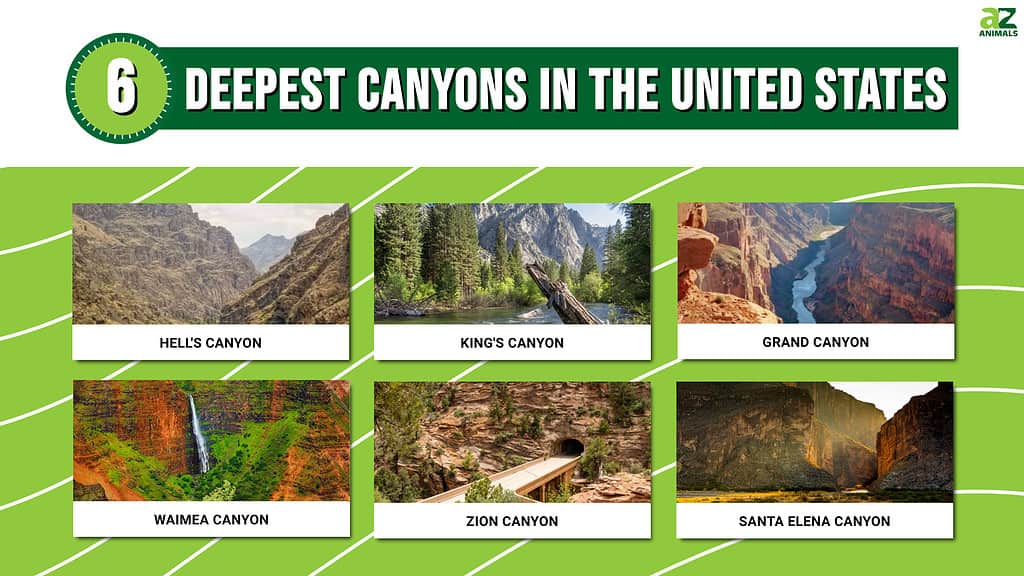
Canyons are deep valleys with steep sides that take years to form. Within these canyons are unique and amazing wildlife. In the United States, there are over 70 canyons to visit and admire. Listed below are some of the deepest. Follow along if you’d like to discover the 6 deepest canyons in the United States and see where the Grand Canyon ranks.
1. Hells Canyon
The deepest canyon in the United States isn’t the Grand Canyon, instead, it’s Hells Canyon, a 10-mile-long canyon with a maximum depth of 7,993 feet. This large canyon sits in Oregon, Idaho, and Washington. Hells Canyon is also part of the Wallowa-Whitman National Forest and the Hells Canyon National Recreation Area. Interestingly, the history of this canyon began at least 300 million years ago. However, the canyon didn’t form until the Snake River carved out the canyon 6 million years ago. Although the canyon and its surrounding area continue to change slowly, the last major change occurred about 15,000 years ago during a flood from Glacial Lake Bonneville in Utah.
For hundreds of years, people inhabited Hells Canyon, starting with the Nez Percé tribe. However, other notable tribes visited including the Shoshone-Bannock, Northern Paiute, and Cayuse Indians. When visiting, you can see countless pictographs and petroglyphs on the walls of the canyon. This stunning canyon is well worth a visit. There are many interesting points like the Dug Bar, Pittsburg Landing, and Hells Canyon Dam. Within the canyon and surrounding wilderness area, you can see animals like wolves, grizzly bears, and mountain goats.
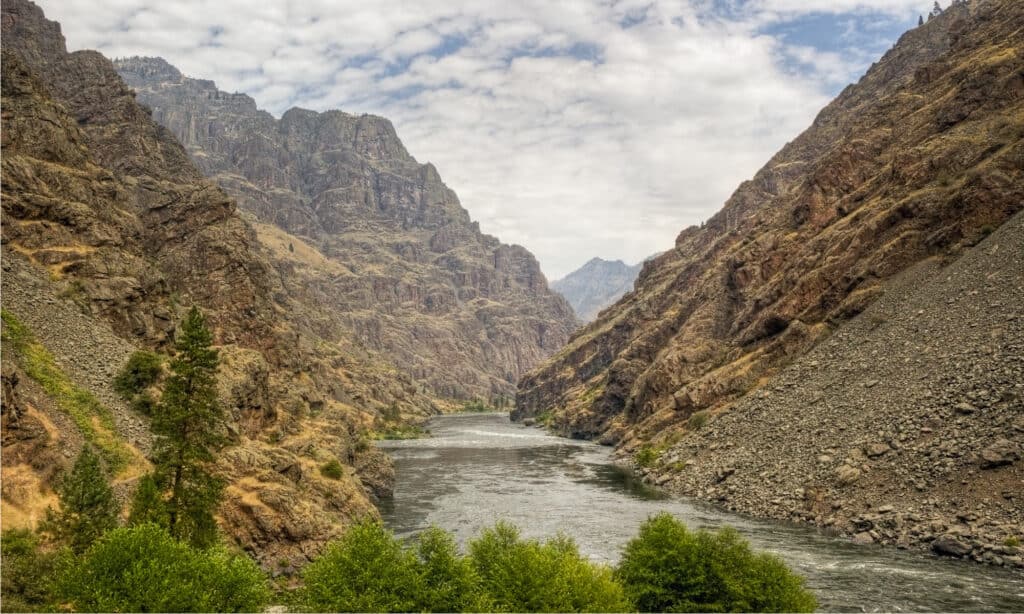
Hells Canyon’s
maximum depth is 7,993 feet, making it the deepest canyon in the United States.
©Jeffrey T. Kreulen/Shutterstock.com
2. Kings Canyon
Kings Canyon is a large canyon within the Sequoia and Kings Canyon National Parks. It’s within the southern Sierra Nevada, in Fresno and Tulare Counties, California. The national park is named after the canyon, which drops down over a mile. This beautiful glacier-carved valley sits on the south fork of the Kings River. Although this little-known canyon is the second deepest canyon in the United States, some people believe it’s the deepest, however, it depends on the measurement. Sources indicate the maximum depth ranges from 7,700 feet to 8,200 feet.
Not only is Kings Canyon stunning, but so is the surrounding area. Within the Sequoia and Kings Canyon National Parks are several small crystal-clear lakes. Experts have documented over 1,200 plant species within the park, which is about 20% of the state’s total plant species. Impressive giant sequoias are also common throughout Sequoia National Park. American black bears, mule deer, gray-crowned rosy finches, and mountain lions live in the forest. Although grizzly bears once roamed the canyon, they’ve been extinct from the region since the early 1900s.
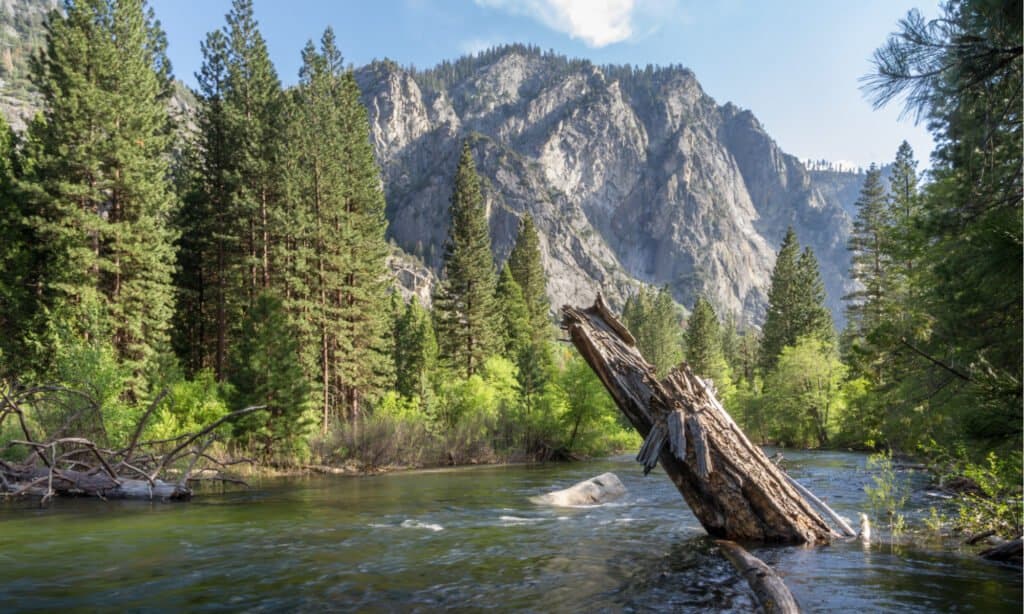
Kings Canyon is the second deepest canyon in the United States and is over a mile deep.
©Leene/Shutterstock.com
3. Grand Canyon
The Grand Canyon is one of the most well-known canyons in the world because of its unique environment and stunning colors. It’s also the third-largest canyon in the country. You can find this canyon in Arizona. The Grand Canyon is 277 miles long and 4 to 18 miles wide. The deepest point in the Grand Canyon is 6,093 feet. Some experts believe this large canyon formed about 5 to 6 million years ago. However, the actual age is still up for debate.
Humans have lived in and near the grand canyon for a long time. The first recorded people that called the Grand Canyon home were the Ancestral Puebloans. Still, other cultures lived in the area, including the Cohonina, Sinagua, Hualapai, Navajo, Southern Paiutes, and Havasupai. The Grand Canyon is also home to many plant and animal species, for instance, there are about 1,737 known species of vascular plants in Grand Canyon National Park. There are also at least a dozen plant species only known to exist within the park’s range. Most birds within the area migrate frequently, while about 48 species nest along the river. Bald eagles, while rare, are common in the Grand Canyon and use the river corridor as a winter habitat.
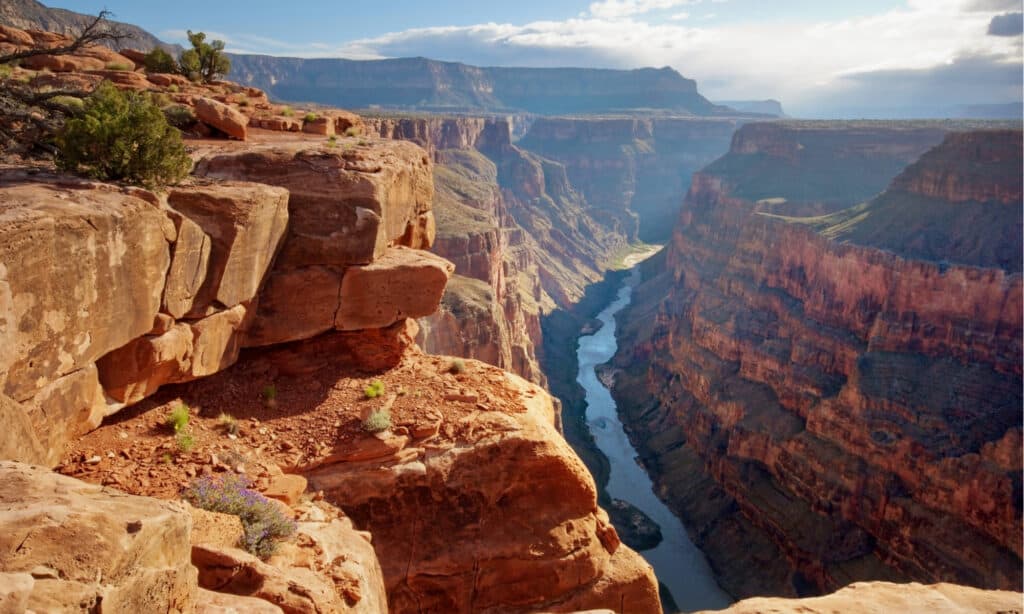
Another one of the deepest canyons in the United States is the Grand Canyon, with a recorded maximum depth of 6,093 feet.
©sumikophoto/Shutterstock.com
4. Waimea Canyon
Next on our list is the fourth deepest canyon in the country, the Waimea Canyon. This canyon’s maximum depth is about half of the Grand Canyon’s. The deepest point in Waimea Canyon is roughly 3,600 feet. You can find this scenic and beautiful canyon on the western side of Kauaʻi in Hawaii. Waimea Canyon is also known as the Grand Canyon of the Pacific and is at least 10 miles long. The canyon is also known for its reddish soil, which is what “Waimea” means in Hawaiian.
This canyon formed millions of years ago by a deep incision of the Waimea River. Interestingly, the west side of the canyon has thin walls, while the east side is very thick. Unlike other canyons, this canyon was formed not only because of erosion, but the collapse of the volcano that created the island. It’s not surprising to know that many people visit this stunning canyon. It’s located within Waimea Canyon State Park which has a surface area of 1,866 acres. Many visitors hike the numerous hiking trails in the park and see the majestic waterfalls.
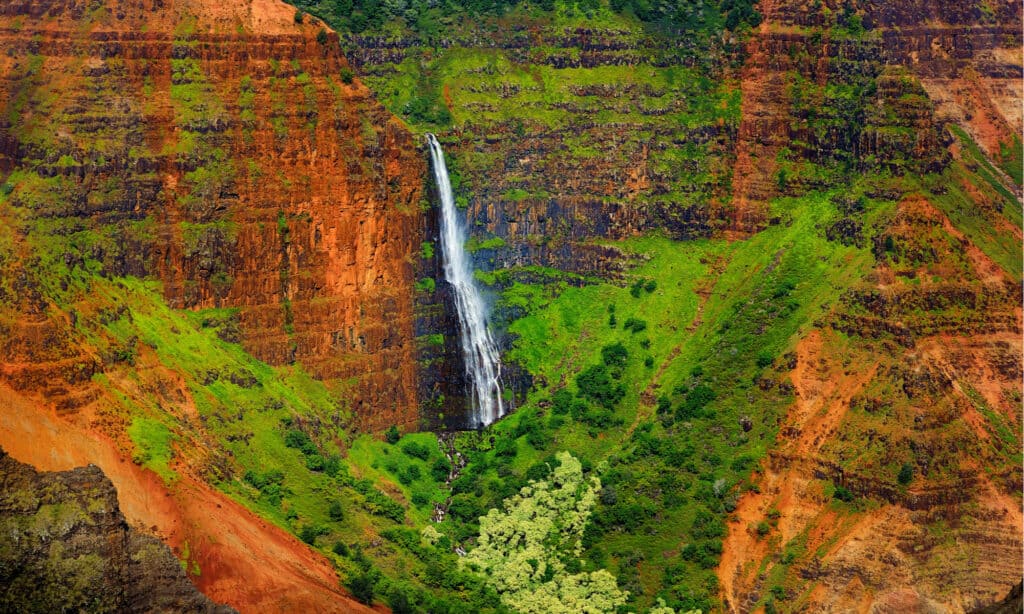
Waimea Canyon has a maximum depth of about 3,600 feet.
©MNStudio/Shutterstock.com
5. Zion Canyon
Another one of the deepest canyons in the United States is Zion Canyon within the Zion Canyon National Park in southwestern Utah. It was primarily carved and formed by the North Fork of the Virgin River. Zion Canyon is about 15 miles long and up to 2,640 feet deep. Two major roads run through the canyon, Zion Canyon Drive and Zion-Mount Carmel Highway. One of the roads ends at a popular hiking trail. However, you should always walk these trails with caution. Zion Canyon has little or no soil cover and flash floods are common after heavy rainstorms.
In Zion Canyon and the surrounding national park, you can find many unique animal and plant species. So far, there are about 289 species of birds and 19 species of bats. Some of the bird species include white-throated swifts, golden eagles, red-tailed hawks, and peregrine falcons. The park is large and has four life zones: desert, riparian, woodland, and coniferous forest. One of the first human inhabitants of the area was the semi-nomadic Basketmaker Ancestral Puebloans. Experts estimate that human habitation started about 8,000 years ago.
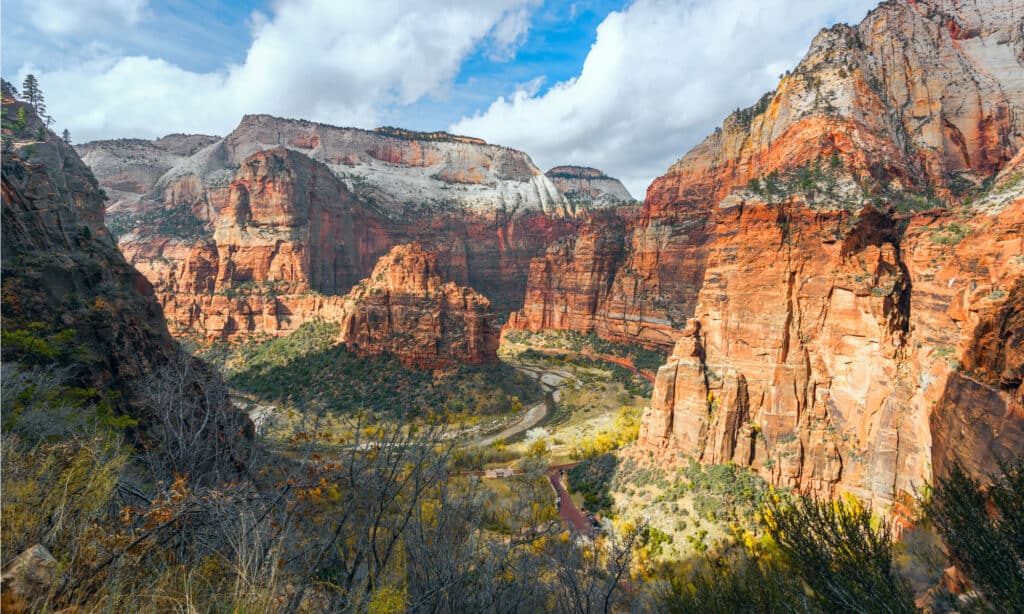
Zion Canyon is a beautiful and deep canyon in
Utah
with a maximum depth of 2,640 feet.
©VIKVAD/Shutterstock.com
6. Santa Elena Canyon
Another one of the deepest canyons in the United States is Santa Elena Canyon. This beautiful canyon stretches 8 miles long with a maximum depth of about 1,500 feet. It’s a wide canyon, but some parts are only 30 miles wide. This stunning canyon is within the Big Bend National Park in West Texas, bordering Mexico. It is the largest protected area of the Chihuahuan Desert topography and ecology in the country. Near the Santa Elena Canyon are two other canyons, Mariscal, and Boquillas.
While visiting Santa Elena Canyon, you can also explore what the park has to offer. There are hundreds of animal species throughout the park. One of the most popular things to do in the park is explore the trails. Throughout the park are also well-preserved dinosaur fossils. There are also many hot springs, which bring in tourists every year. Although this national park has a lot to do, the park only sees about 377,154 annual visitors.
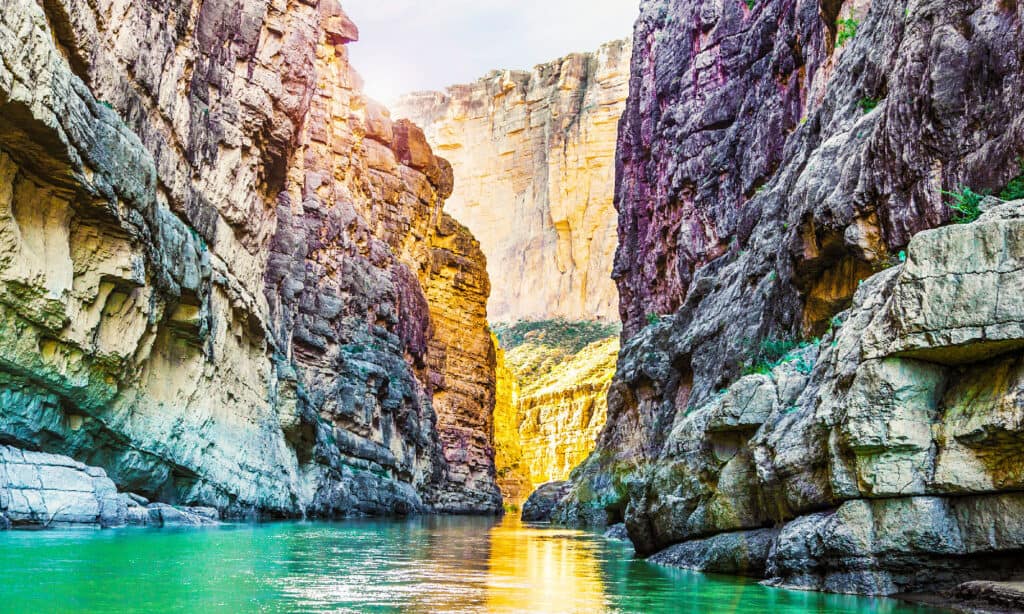
Santa Elena Canyon has a maximum depth of around 1,500 feet.
©Linda Moon/Shutterstock.com
Honorable Mention—Other Canyons in the United States
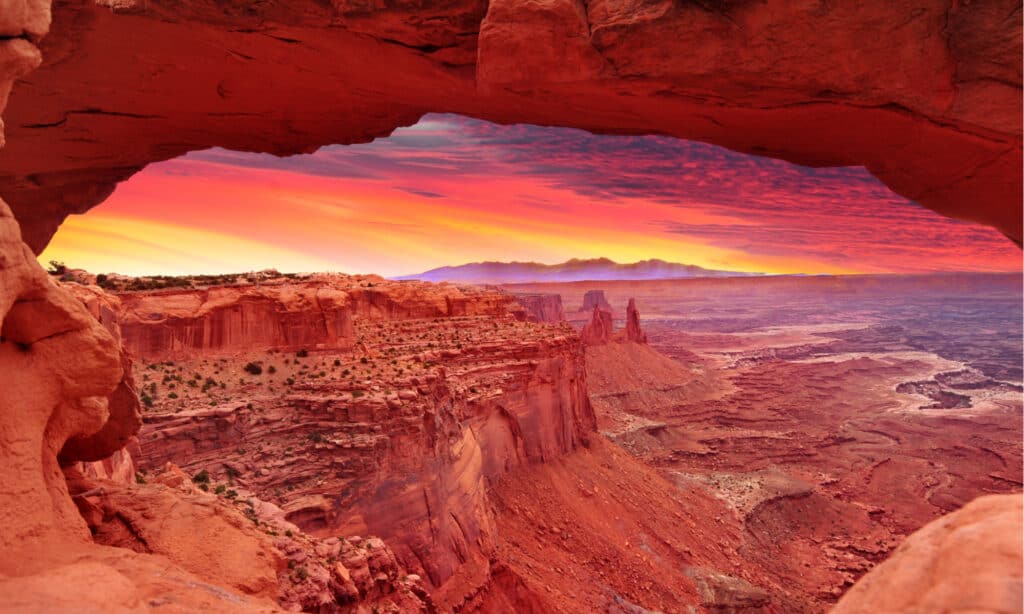
If you visit Utah, be sure to check out the gorgeous Canyonland National Park.
©Edwin Verin/Shutterstock.com
Canyonlands National Park, Utah—This area is a vast expanse of rugged canyons, mesas, buttes, and ridges in southeastern Utah. Its diverse terrain includes deep canyons, sheer cliffs, and lush river valleys, making it an ideal destination for outdoor enthusiasts. From the park’s high points, visitors can experience the vastness of the landscape, with its sweeping vistas, and explore the complex networks of canyons, streams, and mesas.
Capulin Canyon, New Mexico—Located in northeastern New Mexico, Capulin Canyon is a rugged, volcanic canyon with a deep, narrow gorge. The canyon walls are composed of basalt, the result of ancient volcanic eruptions, and the canyon floor is dotted with pine and juniper trees. Visitors to the canyon can explore the rugged terrain, admire the unique rock formations, and take in the stunning views of the surrounding landscape.
Black Canyon, Colorado—The Black Canyon of the Gunnison is an impressive feat of nature, with its sheer 2,700-foot-deep walls and turbulent river. This canyon, located in western Colorado, is one of the most spectacular sights in the United States. Visitors to the canyon can explore the rugged terrain, take in the breathtaking views, and even raft the raging river below.
Nine Mile Canyon, Utah—Nine Mile Canyon is a unique and awe-inspiring canyon located in eastern Utah. With its steep, narrow walls and winding path, this canyon is a sight to behold. Visitors to the canyon can explore the unique rock formations, take in the stunning views of the surrounding landscape, and marvel at the beauty of nature in this remote and rugged canyon.
The photo featured at the top of this post is © sumikophoto/Shutterstock.com
Thank you for reading! Have some feedback for us? Contact the AZ Animals editorial team.






